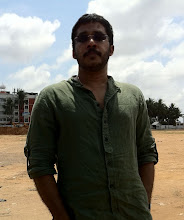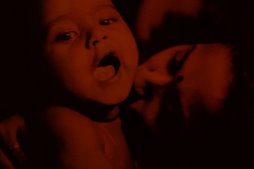


I have been blog morbid for close to three months. Broke my leg in an unusual fall and had to undergo surgery and the mandatory convalescence. Still a couple of more months to go, but thought of publishing what I hadn't started before experiencing the "momentariness" of life.
Of nearly a dozen movies I watched during the period, three stand out for a wide variety of reasons: Fracture, The Bourne Ultimatum, and A Mighty Heart. It is indeed heartening to note that the excessive celluloid exhaust we witness these days does indeed have some gems. Films that are great in ideas, content, drama, narrative structure, style, and perfomances.
Of the lot I mentioned above, Bourne Ultimatium is superb in terms of what action and suspense thrillers can offer. A great plot of espionage, intrigue and action traversing the world, Bourne Ultimatium, is terrific stuff.In this third part of the Bourne trilogy, an android-looking Mat Damon continues his search for his identity through a maze of high-tech gadgetry, ruthless pursuit by his earstwhile masters and superb lines. Take a close look at those razor-sharp cuts, where some frames last less than half a second, the extremely mindful use of hand-helds and steadicams, a huge variety of shots ranging from the distant voyeuristic, crazy zoom-ins to tight close-ups, and those stylish pans. It also has one of the most engaging chases I have ever seen in movies. I wouldnt want to say anytihng more. It is the cocktail of intrigue and adrenalin at its best. I don't read Robert Ludlum and the works of his genre. Perhaps this movie might compel me to take a look at Ludlum, for he is the author of the Bourne trilogy. Among the three Bourne movies, this looks the best.
In terms of style and narrative, Bourne Ultimatum is contiguous with the previous episode of the trilogy, Bourne Supremacy. No marks for guessing. It is the signature of director Paul Greengrass.
The Fracture, on the other hand is sheer drama and perfomance. Anthony Hopkins and a relatively unknow Ryan Gosling serve a fantastic drama, with hardly any outdoor shots. It is high quality drama and a cheeky thriller. Ted (Anthony Hopkins), shoots his wife over an extra-marital relationship and succesfully sets up a legally viable escape plan. Willy Beacham, an extremely succesful young attorney (Ryan Gosling)thinks he has an open-and-shut case with a written confession and circumstantial evidence. But the plans of Ted, who looks like a loveable criminal, work out. He walks out scot-free, but not before an irrepressible Willy, makes a last-minute breakthrough. The performance of Anthony Hopkins is the stealer. It is menacing, vicarious and loveable. The good punch lines, an intelligent plot and measured photography make it a worthwhile movie. "If you look close enough, everybody has a weak spot" - that is the tagline of the movie. And it does make sense. Take a look.
By the way, the director of the movie, Gregory Hoblit ("NYPD Blue" fame)had pioneered the "loose camera" look (the handheld feel), used in movies such as "Bourne Ultimatum".
I will recommend A Mighty Heart for two reasons - the trademark gonzo style of director Michael Winterbottom , reminiscent of his earlier film, The Road to Guantanamo, and the casually elegant performance by the Indian cross-over actor, Ifran Khan. He is arresting and see the contrast in the frames that he shares with Anjolina Jolie. It is about abduction and death of Daniel Pearl, the Wall Street Journal reporter, who was investigating stories on Taliban and Al Queda post 9/11. Good fare for students of cinema. I do wonder how he pulled off such a hand-held strategy. Definitely worth your time.















